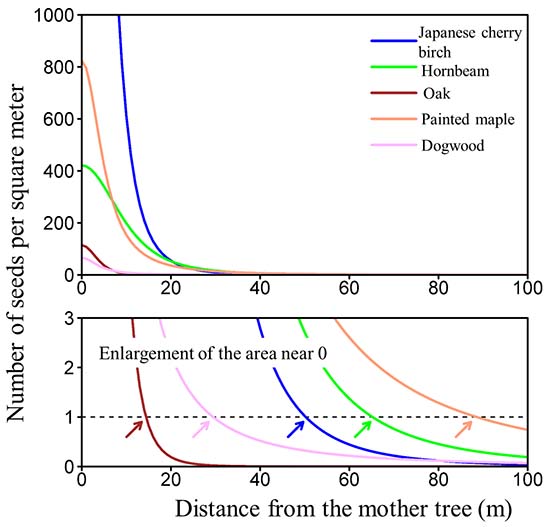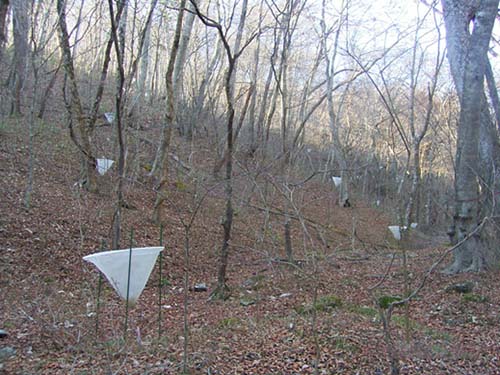Home > Research > Research Results > Research Results 2020 > Seeds of trees are not dispersed very far
Update:July 8, 2020
Main content starts here.
Seeds of trees are not dispersed very far
| Article title |
Impact of the spatial uncertainty of seed dispersal on tree colonization dynamics in a temperate forest |
|---|---|
| Author (affiliation) |
Takashi Masaki (a), Tohru Nakashizuka (b), Kaoru Niiyama (c), Hiroshi Tanaka (d), Shigeo Iida (e), James M. Bullock (f), Shoji Naoe (g) (a) Research Planning and Coordination Department, FFPRI, Tsukuba, Ibaraki, Japan. (b) Research Institute for Humanity and Nature, Kyoto, Japan. (c) Department of Forest Vegetation, FFPRI, Tsukuba, Ibaraki, Japan. (d) FFPRI Fellow, FFPRI, Tsukuba, Ibaraki, Japan. (e) Kyushu Research Center, FFPRI, Kumamoto, Japan. (f) NERC Center for Ecology and Hydrology, Wallingford, UK. (g) Tohoku Research Center, FFPRI, Morioka, Iwate, Japan. |
| Publication Journal |
Oikos, 128, 1816-1828, December 2019, DOI:10.1111/oik.06236( External link ) |
| Content introduction |
After deforestation, the success of natural regeneration depends on how many seeds reach the deforested site. To understand how far tree seeds reach, numerous traps were set up in a multi-species forest to collect the seeds of deciduous broad-leaved trees. The seeds in the traps were counted, and analyses were made of the relationship between the number of seeds and the distance from the mother trees. Seeds were dispersed in various ways, such as by wind (birch, hornbeam, maple, etc.), by birds and other animals that had swallowed seeds (dogwood, etc.), and by falling from the mother trees (oak, etc.). However, in all cases, the seeds were concentrated within an area of about 30m from the mother trees. In order to compare the characteristics of tree species, the maximum distance that at least one seed reached per square meter was calculated. The results were estimated to be 60m~80m for maple and hornbeam, 30m~50m for birch and dogwood, and about 15m for oak. The general image is that birch seeds are transported long distances by the wind, while seeds of dogwood are transported long distances by birds that swallow the seeds. Contrary to this image, however, the seeds surprisingly only reach short distances. These results support empirical findings that it is relatively easy for artificial coniferous plantations to be transformed into broadleaved forests if the broadleaved trees that are the sources for the seeds are within 30m of the site. In addition, the present study has also indicated that the distance that seeds can reach differs depending on the tree species. By incorporating such information, it will be possible to plan for more precise natural regeneration.
Figure: Based on the results of the present study, the estimated values of numbers of fallen seeds in conjunction with the distance from one mother tree are shown (ca. 5400 seeds at a distance of 0m from Japanese cherry birch). The lower figure is an enlarged section of the upper figure. The intersections between the curves and the dotted line which represents 1 seed per square meter are used as the "maximum distances".
Photo: Seed traps were set up at fixed intervals in a lattice pattern in the surveyed forest, and the seeds that were in the traps were counted. |
Copyright © Forest Research and Management Organization. All rights reserved.


